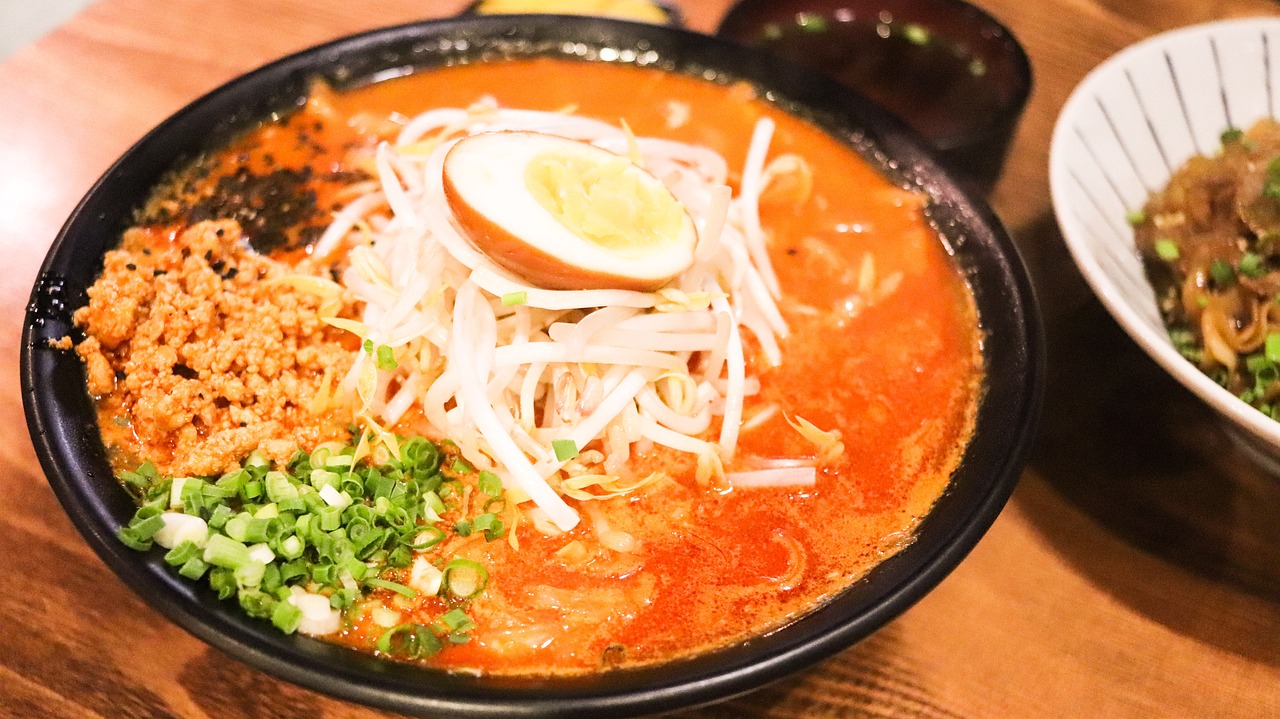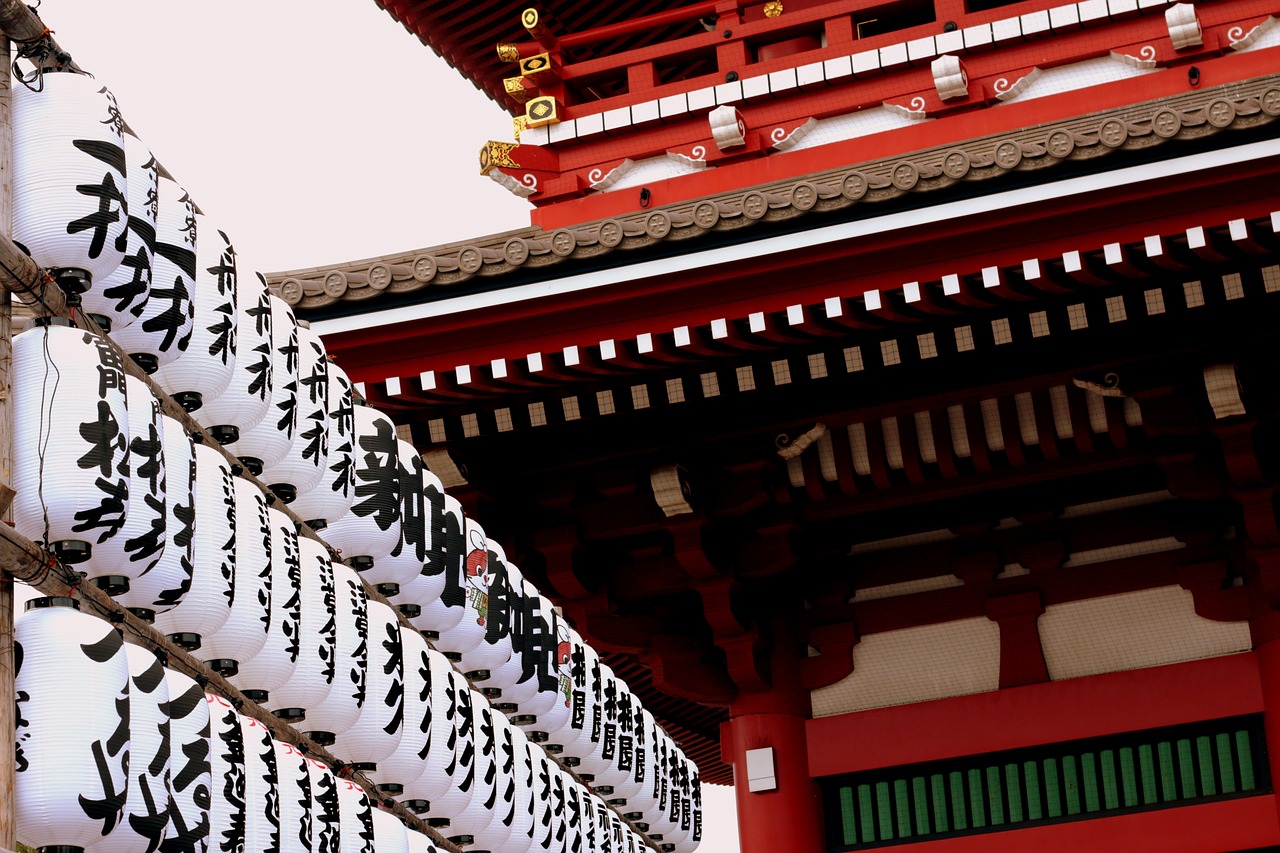Japanese Ramen Soup

Japanese Ramen Soup is a culinary masterpiece that takes taste buds on a delightful journey through the rich and flavorful world of Japanese cuisine. This beloved dish, renowned for its diverse ingredients and regional variations, offers a unique and captivating experience for food enthusiasts worldwide.
History of Ramen
When we delve into the , we uncover a fascinating culinary journey that spans centuries and continents. Originating in China, this beloved noodle soup made its way to Japan and underwent a remarkable transformation to become the iconic dish we know today. The evolution of ramen reflects a blend of cultural influences and culinary innovations, resulting in a diverse range of styles and flavors that continue to captivate food enthusiasts around the world.
The roots of ramen can be traced back to Chinese noodles introduced to Japan in the late 19th century. Initially served in simple broth, ramen gradually evolved to incorporate local ingredients and cooking techniques, giving rise to distinctive regional variations. The development of different types of ramen, such as shoyu (soy sauce), miso, and tonkotsu (pork bone), showcases the adaptability and creativity of Japanese chefs in redefining this humble dish.
One of the key milestones in the history of ramen was the post-World War II era, where the dish gained widespread popularity as an affordable and comforting meal for the masses. Ramen shops, known as "ramen-ya," proliferated across Japan, each offering its unique twist on the classic noodle soup. This period marked the democratization of ramen, making it accessible to people from all walks of life.
As the popularity of ramen continued to soar, it transcended its humble origins to become a culinary phenomenon celebrated for its depth of flavor and versatility. The cultural significance of ramen is deeply ingrained in Japanese society, with ramen shops becoming cherished institutions that embody tradition, innovation, and craftsmanship.
Today, the history of ramen serves as a testament to the enduring appeal of this beloved dish, which has evolved from a simple bowl of noodles into a culinary masterpiece that showcases the artistry and passion of chefs dedicated to perfecting the art of ramen-making.
Ingredients and Broth
When it comes to crafting the perfect bowl of Japanese ramen soup, the ingredients and broth play a crucial role in defining its flavor profile and overall experience. Let's take a closer look at the key components that make up this iconic dish.
First and foremost, the foundation of any good ramen is the broth. Traditionally, there are three main types of broth used in ramen: shoyu (soy sauce-based), miso (fermented soybean paste-based), and tonkotsu (pork bone-based). Each broth has its own distinct flavor profile, ranging from rich and savory to hearty and creamy.
Next, we have the noodles, a fundamental element of ramen. These chewy strands of goodness come in various thickness and textures, with some regions of Japan preferring thinner noodles while others opt for thicker varieties. The type of noodle used can significantly impact the overall mouthfeel of the dish.
Complementing the broth and noodles are a variety of toppings and garnishes that add depth and complexity to the flavor profile of the ramen. Common toppings include chashu pork (braised pork belly or shoulder), soft-boiled eggs marinated in soy sauce and mirin, nori seaweed for a touch of umami, and fresh green onions for a burst of freshness.
Additionally, some ramen shops offer extra toppings such as menma (fermented bamboo shoots), corn, butter, or even spicy chili oil to customize your bowl according to your preferences. These toppings not only enhance the taste but also contribute to the visual appeal of the dish, creating a feast for both the eyes and the palate.
Lastly, the art of preparing the broth is a meticulous process that involves simmering bones, vegetables, and aromatics for hours to extract maximum flavor and create a rich, umami-packed base for the ramen. The balance of flavors in the broth is crucial, as it sets the tone for the entire dish and determines its overall deliciousness.
In conclusion, the magic of Japanese ramen soup lies in the harmonious blend of high-quality ingredients, skillful preparation techniques, and a deep respect for culinary tradition. Whether you prefer a classic shoyu ramen or a bold miso variation, each bowl tells a story of craftsmanship and passion that continues to captivate food lovers around the world.
Regional Ramen Varieties
When it comes to regional ramen varieties in Japan, each area boasts its own unique twist on this beloved dish, offering a diverse range of flavors and styles that cater to different preferences. Let's take a flavorful journey through some of the most renowned regional ramen varieties:
- Sapporo's Miso Ramen: Originating from the northern city of Sapporo, this style of ramen features a rich and hearty miso-based broth that is both savory and satisfying. The robust flavor of the miso broth pairs perfectly with the chewy noodles, creating a comforting bowl of ramen that warms the soul.
- Hakata's Tonkotsu Ramen: Hailing from the southern city of Hakata, tonkotsu ramen is known for its creamy and pork-based broth that is simmered for hours to achieve a thick and flavorful consistency. Topped with slices of tender chashu pork and garnished with green onions, this ramen variety is a true indulgence for pork lovers.
- Tokyo's Shoyu Ramen: In the bustling metropolis of Tokyo, shoyu ramen reigns supreme with its clear soy sauce-based broth that is light yet packed with umami flavors. The simplicity of the shoyu broth allows the other ingredients, such as the tender chashu pork and perfectly cooked egg, to shine through, creating a harmonious balance of flavors.
Each regional ramen variety offers a distinct culinary experience that reflects the local ingredients, preferences, and traditions of its respective area. Whether you prefer the bold flavors of miso ramen, the creamy richness of tonkotsu ramen, or the delicate simplicity of shoyu ramen, there is a regional ramen variety to suit every palate. So, the next time you sit down to enjoy a steaming bowl of ramen, consider the unique story and flavors behind each regional variety, adding an extra layer of depth and appreciation to this iconic Japanese dish.
Ramen Toppings and Garnishes
When it comes to enjoying a delicious bowl of Japanese ramen soup, the toppings and garnishes play a crucial role in elevating the overall experience. These additions not only enhance the flavor but also contribute to the visual appeal of the dish, creating a feast for both the eyes and the palate.
One of the most popular toppings found in ramen bowls is chashu pork, thinly sliced and tenderized pork belly or shoulder that is often braised in a flavorful marinade. The melt-in-your-mouth texture and rich umami taste of chashu pork complement the savory broth and noodles perfectly, adding a luxurious touch to the dish.
Another beloved garnish is the soft-boiled egg, known as ajitsuke tamago, marinated in a mixture of soy sauce, mirin, and sake. The creamy yolk and seasoned egg white provide a creamy and slightly sweet contrast to the savory broth, creating a delightful burst of flavor with every bite.
Nori seaweed is a common topping that adds a hint of oceanic umami flavor and a satisfying crunch to the ramen bowl. This dried and roasted seaweed is often torn into small pieces and sprinkled on top of the noodles, enhancing the overall taste profile and offering a delightful contrast in texture.
For a pop of freshness and a subtle onion flavor, green onions are frequently used as a garnish in ramen. These thinly sliced scallions add a vibrant color to the dish while providing a refreshing and aromatic element that cuts through the richness of the broth, creating a well-balanced and harmonious combination of flavors.
Additionally, other toppings such as menma (fermented bamboo shoots), narutomaki (fish cake with a distinctive pink swirl), kikurage (wood ear mushrooms), and corn are commonly found in various regional styles of ramen, each contributing unique textures and flavors to the culinary tapestry of this beloved dish.



 HazalVardal
HazalVardal 





